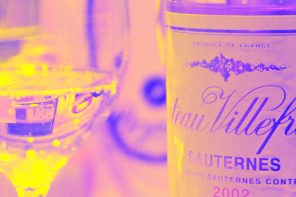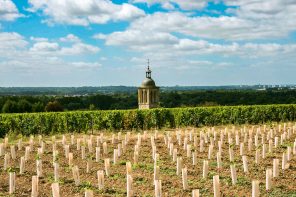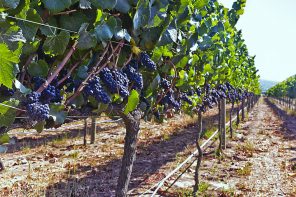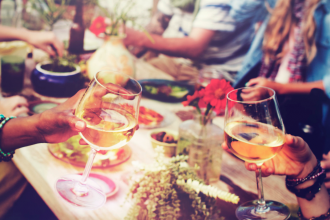In France, it’s difficult to walk more than a few feet without stumbling into another wine region. While there are numerous famous wine regions in the country, each one is special and produces wine unique to that region. Nestled between Burgundy and the Rhone Valley is a wine region that was first cultivated by the Romans thousands of years ago that has since seen times of both triumph and turmoil.
Although Beaujolais sits between two major regions, it still holds its own and isn’t just another French wine AOC appellation. The region distinguishes itself in that it is one of the few in the world to concentrate primarily on one grape varietal, (98 percent of the region is Gamay). Gamay was originally grown in Burgundy until the Duke of Burgundy, Philippe the Bold, banned the grape from his region on account of its bitterness and general hatred of the grape. But the ban couldn’t have been better for it. Growers in Beaujolais accepted Gamay with open arms, and the granite, limestone and clay terroir of the region suits it perfectly.
The grape produces a light-bodied red wine with low tannin, high acidity and notes of cranberry, tart cherry and raspberry. Other varietals are grown in Beaujolais such as Pinot Noir, Chardonnay and Aligoté, which are used to make tasty Beaujolais Blanc and rosé. Interestingly enough, these white grapes can also be used in red blends but can only consist of 15 percent of the final product.
These varietals are used to make the three classifications of wine that come from Beaujolais: Beaujolais AOP, Beaujolais Villages AOP and Cru Beaujolais. Within the Beaujolais AOP comes a unique style of wine called Beaujolais Nouveau, which is what really brought attention to the region back in the 19th century.
Beaujolais Nouveau is extremely unique as it is produced, bottled and ready to drink a mere six to eight weeks after harvest. These young wines were originally intended for harvest workers to drink when celebrating the end of harvest, but soon enough, bottles started popping up in restaurants and cafés in the surrounding cities. The style of wine has since become so popular, a third of the region’s production is dedicated to producing it.
But the style’s popularity almost led to the region’s downfall. Because of the Nouveau craze, the region devoted almost all of its production to Nouveau and when people started losing interest, it left the region virtually in ruins by the late ‘90s. But a small group of local winemakers started producing higher quality wines, reviving the region and showing its capacity for sophisticated wines beyond Nouveau.
Beaujolais Villages is the next step up in quality. There are 38 villages that produce these wines, and because of the area’s complex terroir, the wines have a unique minerality to them – making them higher in quality than standard Beaujolais wines. Cru Beaujolais wines are high-quality reds that drink like Burgundies but at a fraction of the cost. The wines come from 10 vineyards in the area, each of which has its own appellation designation because they’re that good. They are Brouilly, Chénas, Chiroubles, Côte de Brouilly, Fleurie, Juliénas, Morgon, Moulin-à-Vent, Régnié and Saint-Amour. Although these wines come from areas close in proximity, they all display different flavor profiles (hint: why they’re their own appellations), are more sophisticated and have the ability to age well over time.
French wine options are abundant, we know, but Beaujolais is special. It has a winemaking culture that extends for centuries, the dedication and determination to the region to bring it back from the brink of extinction and the unique ability to specialize almost its entire space on a single grape. Clearly, it’s got a lot of character. Keep Beaujolais in mind the next time you feel like a light-bodied, juicy French red for a fraction of the cost.








